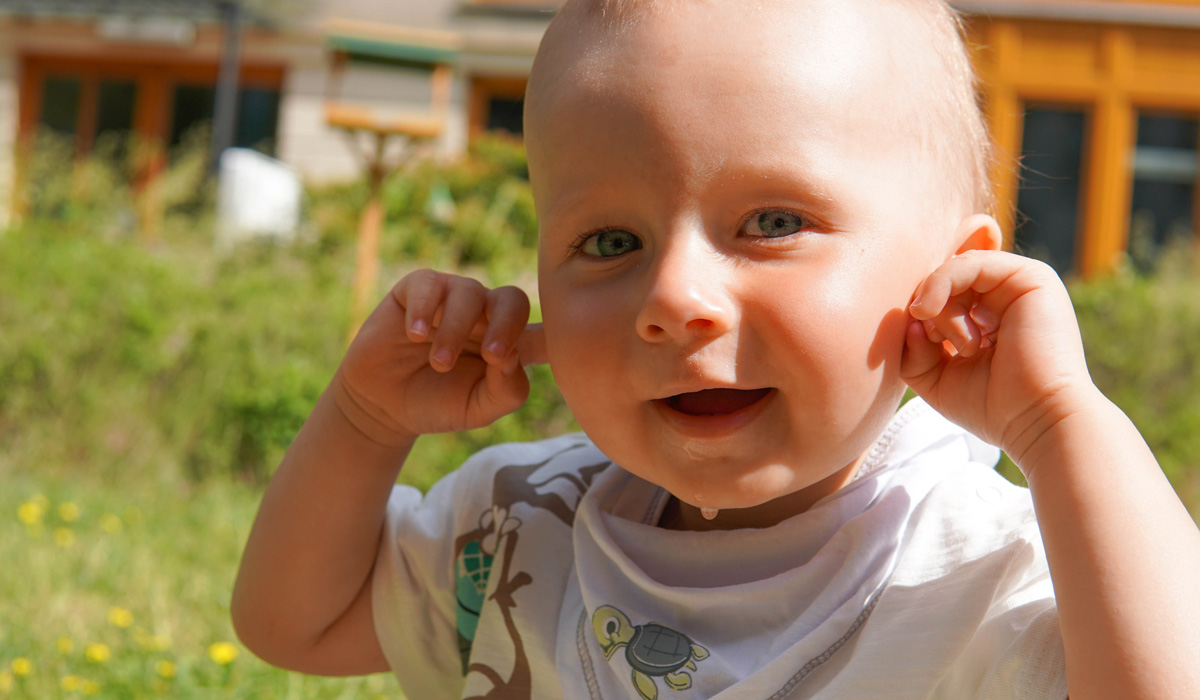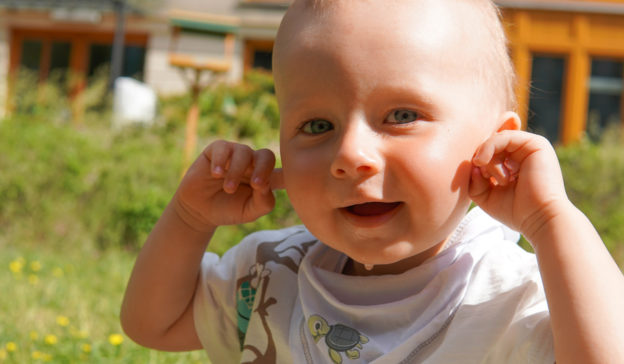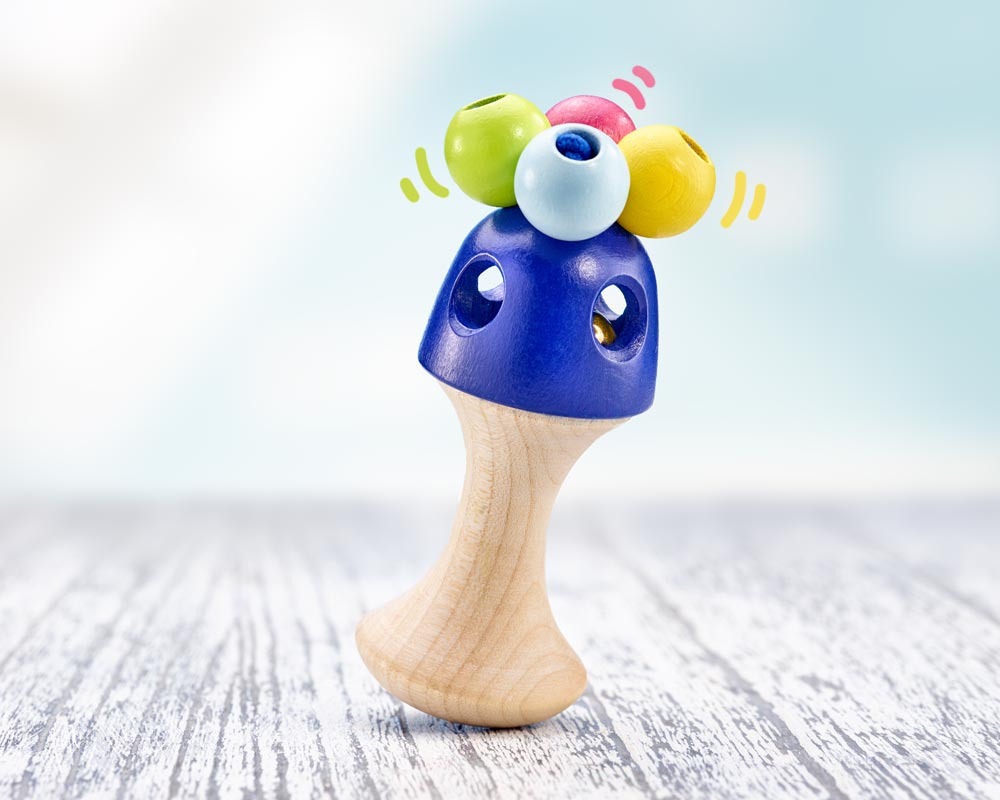As an adult, one often craves moments of peace in the noise of everyday life. The same is true for babies, who are exposed to acute sensory overload after having had only a muffled perception of sounds while they were in their mother’s womb. Their ears are considerably more sensitive than those of an adult. So are toys which produce sounds really a good thing?

Not too loud, please
Small children love making noise. This is why they react with particular enthusiasm to anything that produces a sound or music. Constant noise, however, places people and, above all, babies, under enormous stress. Electronic toys, especially, can quickly reach a volume of 95 decibels, which is as loud as a train passing close by, making it over the legal limit.
Experts warn that, in particular, toys which produce an impulse noise — i.e. a noise that occurs suddenly and reaches a peak, such as banging or clattering — can lead to damage to the inner ear in infants and small children. Hearing loss can occur with exposure to noises of 100 decibels. You therefore need to be particularly careful with toys which make banging noises, as well as with whistles and horns.
You can easily test whether a toy that makes noises has a moderate volume: hold it close to your ear. If it seems too loud for you, it is definitely not suitable for your child. There are also smartphone apps with sound level meters which can measure decibel levels. These methods of measurement are, however, imprecise, and the results depend on how you use the toy.
Strength is born from peace
An infant’s hearing is particularly acute. It is presumed that this is necessary for the formation of speech. However, children are good at blocking out loud noise and are even able to sleep through a high degree of hustle and bustle. They have no natural defense mechanism to warn them of possible danger. A child who grows up in a noisy environment gets accustomed to noise after a certain time and then finds it difficult to deal with silence.
It is therefore up to you to protect your child from noise or, more specifically, to show them how to cope properly with noise. Establish moments of silence from the very start. These are important to allow your baby to reflect on, process and store every sensation. Show your child that periods of rest are relaxing and not a punishment. Soothe your baby with your voice, stimulate them with the gentle sounds of a rattle or sing a quiet song.
Incidentally, the bells and squeaky parts in Selecta’s wooden toys are totally harmless to a baby’s ears. They are tested regularly by independent institutes.





